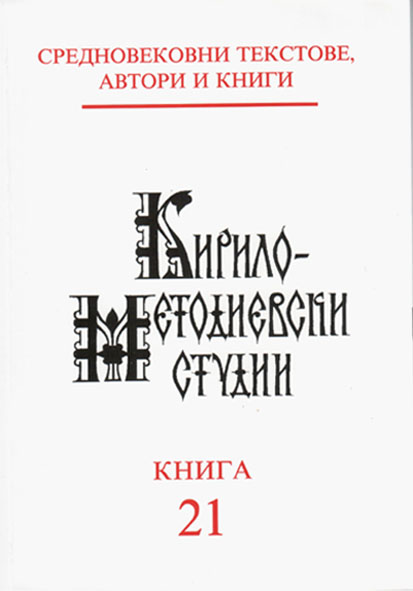The Symbolism of Space in Medieval Hagiography
The Symbolism of Space in Medieval Hagiography
Author(s): Irena ŠpadijerSubject(s): Language studies
Published by: Кирило-Методиевски научен център при Българска академия на науките
Summary/Abstract: The space in the medieval literature is not a real space. Even when authors depict a place or physical whereabouts of the characters, space is understood symbolically. Once defined in this manner, the real names of certain places, geographical locations or types of landscape acquire a symbolic meaning and thus become 'topoi', functioning as such in a thousand-yearlong Orthodox medieval literature. Therefore, when analyzing the perceptions of nature and space, the focus should be moved from the author's perception of it (medieval authors were not interested in the landscape per se) to the examination of the symbolic function of space in the system of the literary work. In this paper we will look at the actual manifestations of the medieval symbolism in the hagiographic literature, by using a piece from Serbian hagiography, The Life of St Peter of Korisha, written by Theodosius of Hilandar, as an example. The symbolism of space in The Life of St Peter of Korisha is reflected in the way in which his spiritual development takes a form of a "topographic displacement" (he moves from civilization to the wilderness/desert). The attainment of holiness is understood as the movement in space. When interpreted in this manner, the names of certain types of space in which Peter of Korisha moved and lived are not just authentic names, they have a symbolic value. Peter's village, the church and his house-all represent the outside world and the world of culture in general. The first topos signifying the space filled with symbols is readily found in the part of the text describing the saint's gradual isolation from the world. It is a cabin. With the hero's increased distancing and, eventually, total isolation from the world, the reader becomes aware of other spatial notions: the desert, mountain, cave, cliff - their symbolism has been analysed in this paper from the perspective of their significance with respect to the place and the space in which events enfold, as well as to the meaning of Peter's spiritual victories and attainment of the level of perfection he was struggling to reach.
Journal: Кирило-Методиевски студии
- Issue Year: 2012
- Issue No: 21
- Page Range: 300-308
- Page Count: 9
- Language: English
- Content File-PDF

